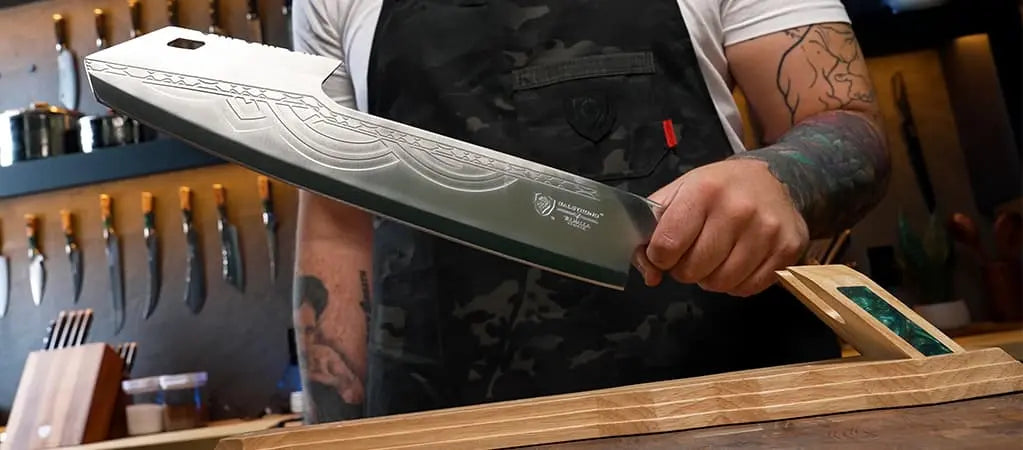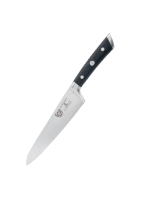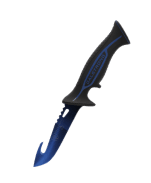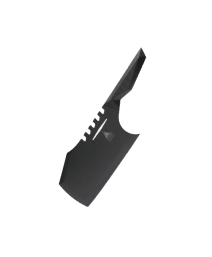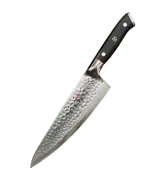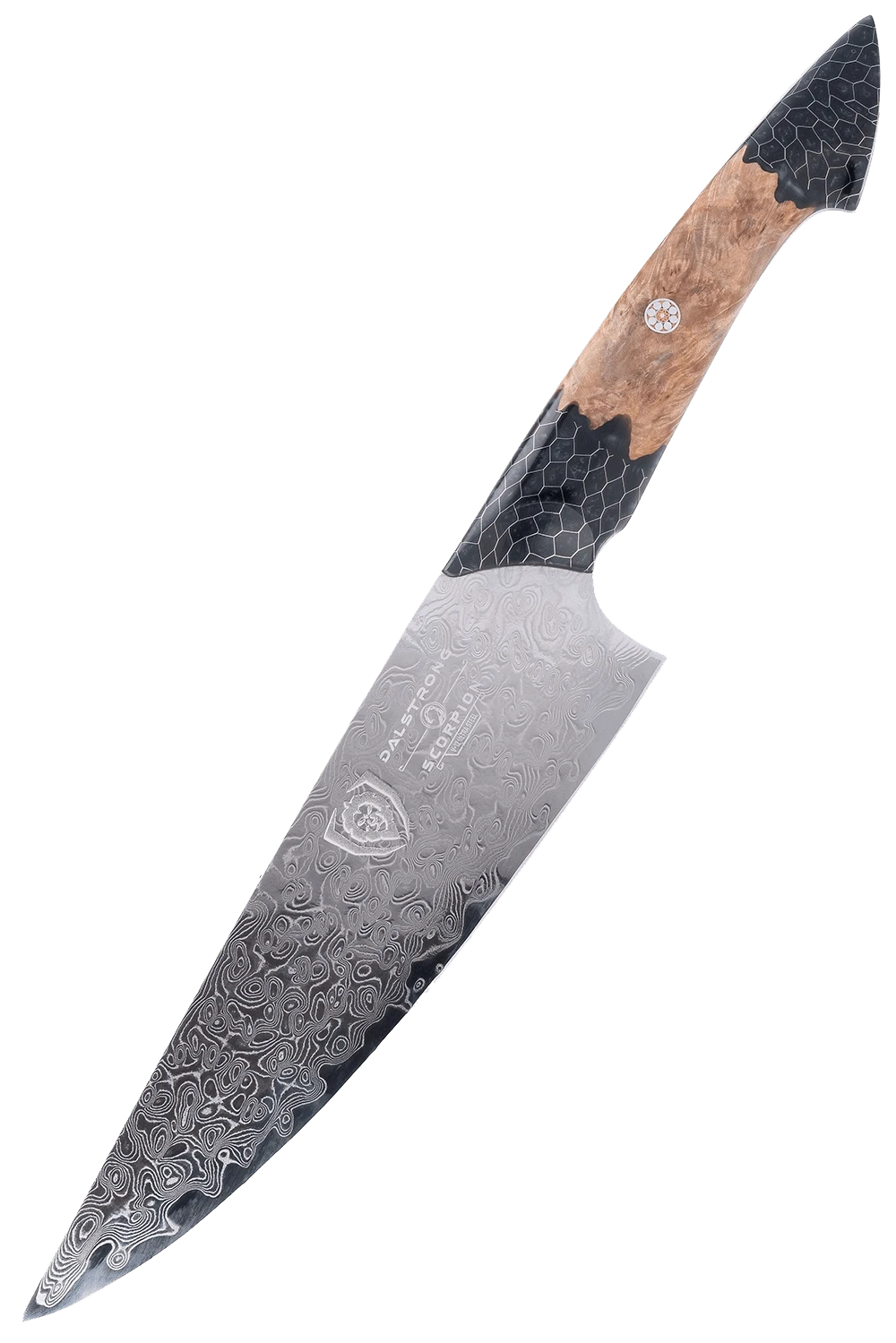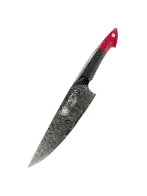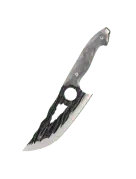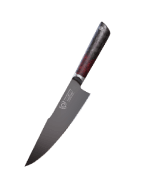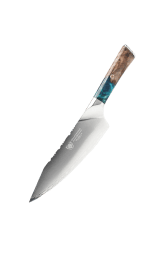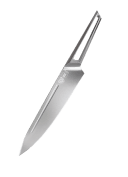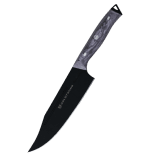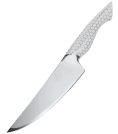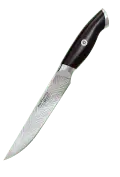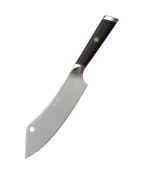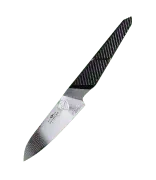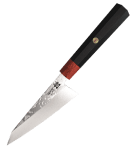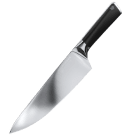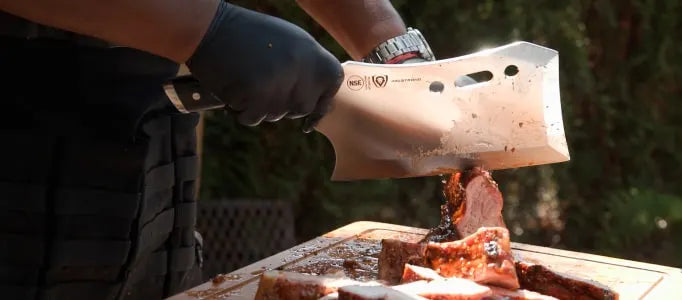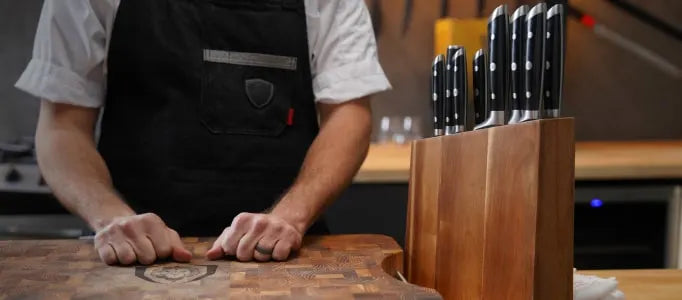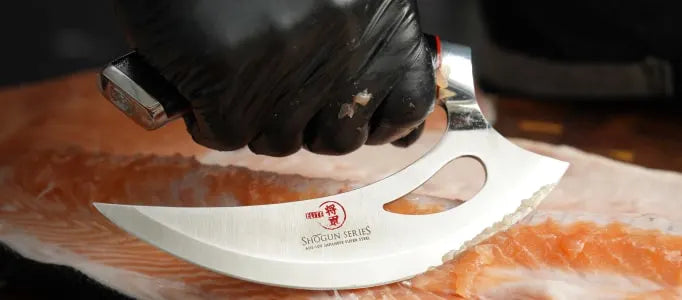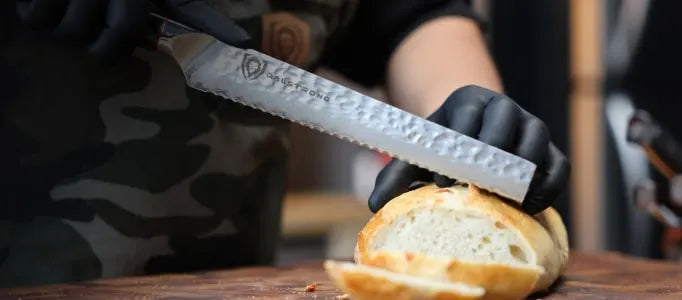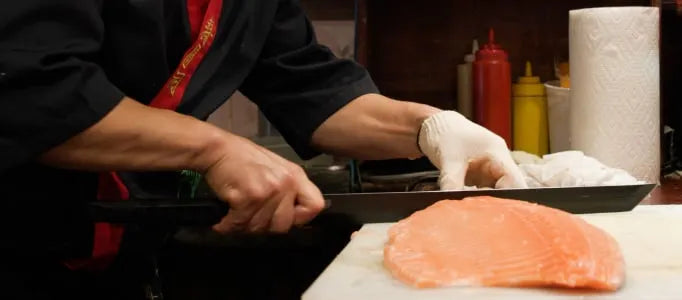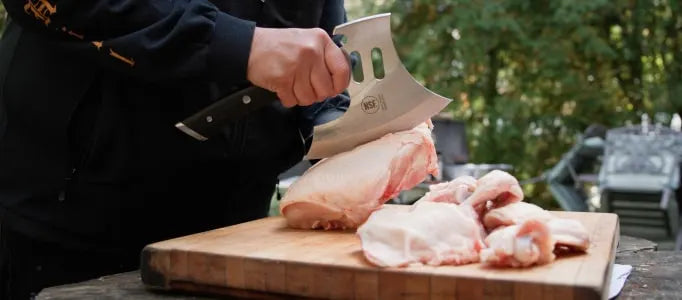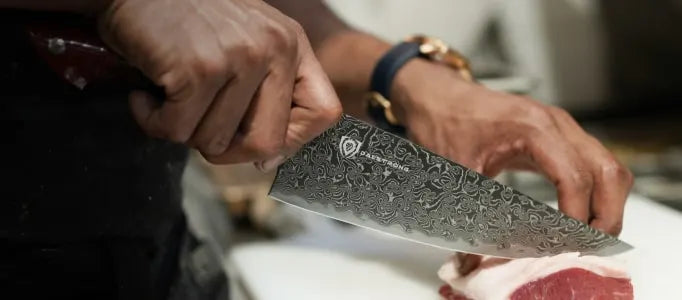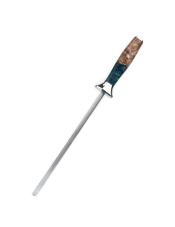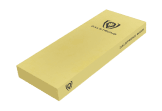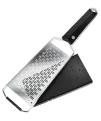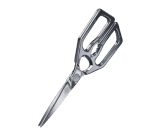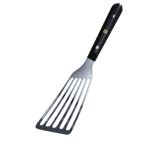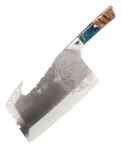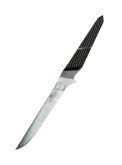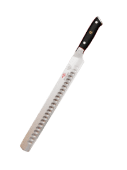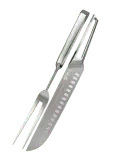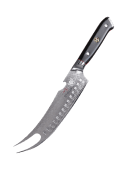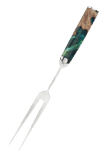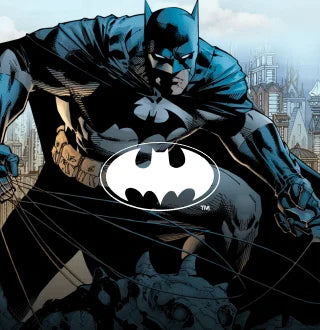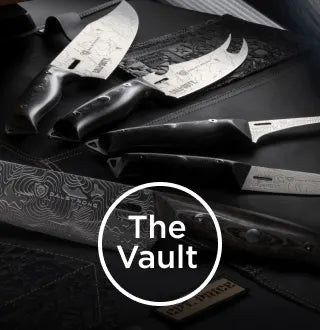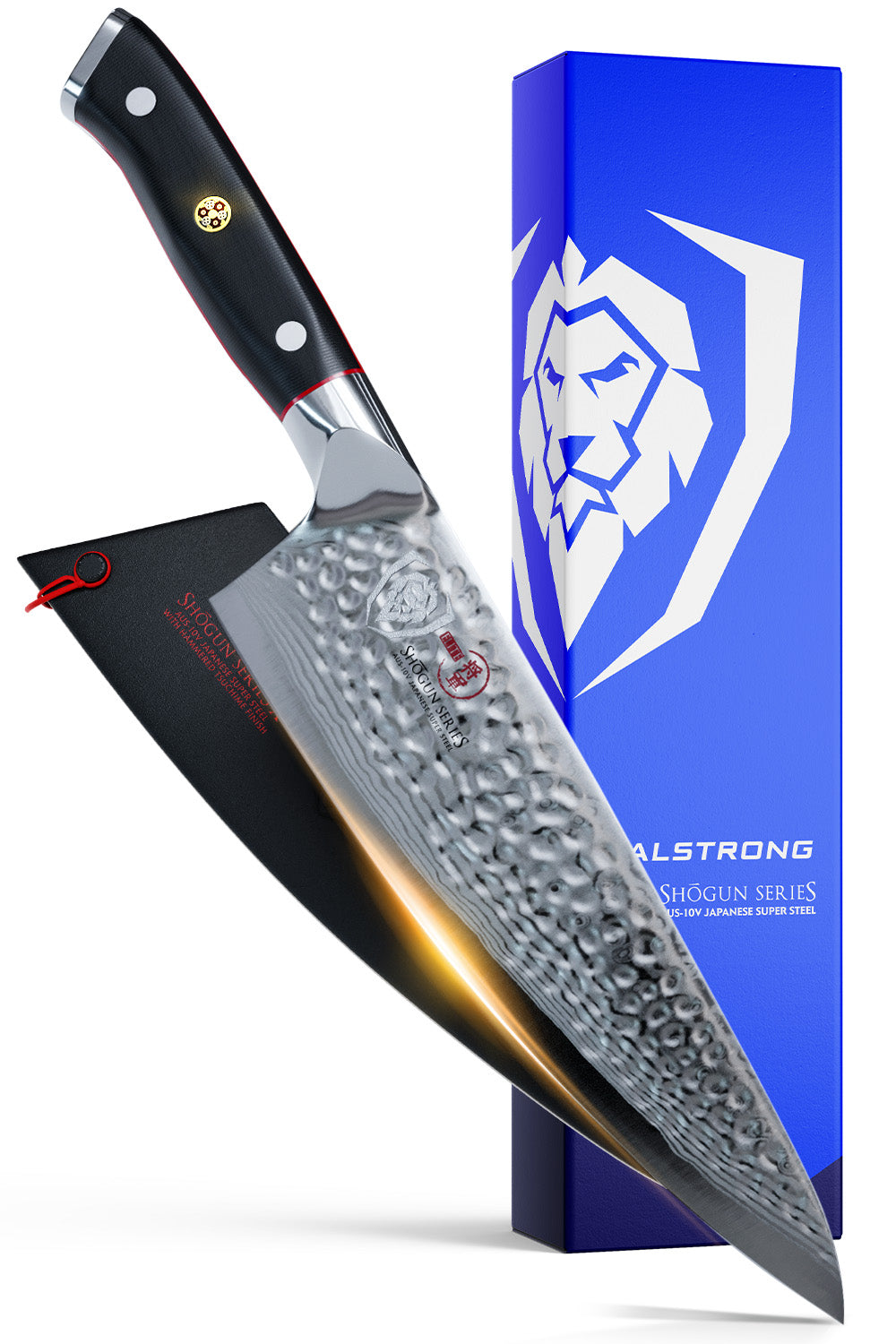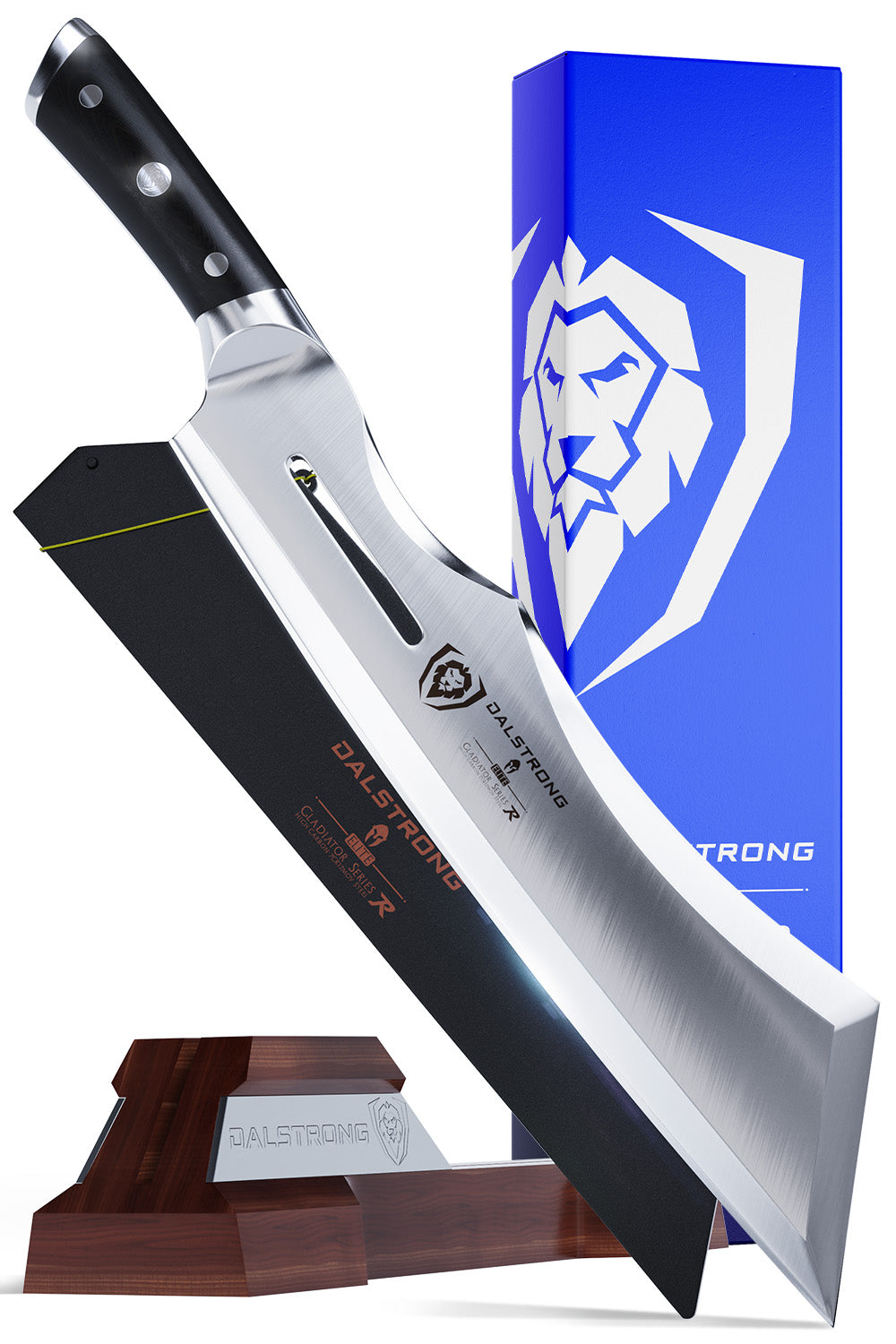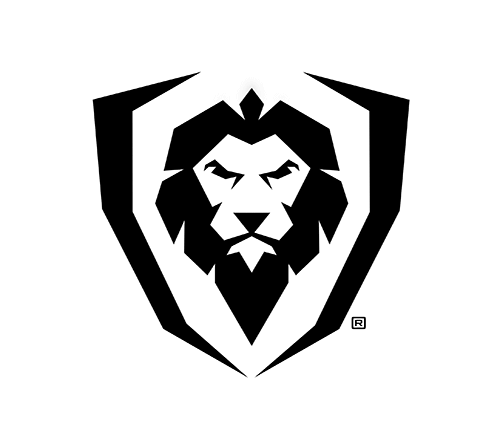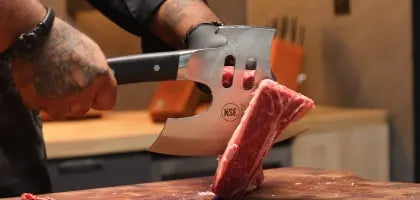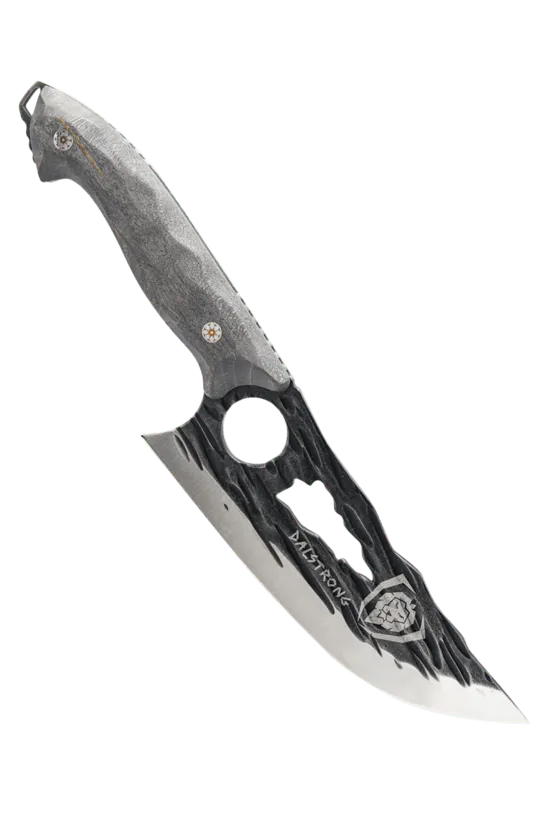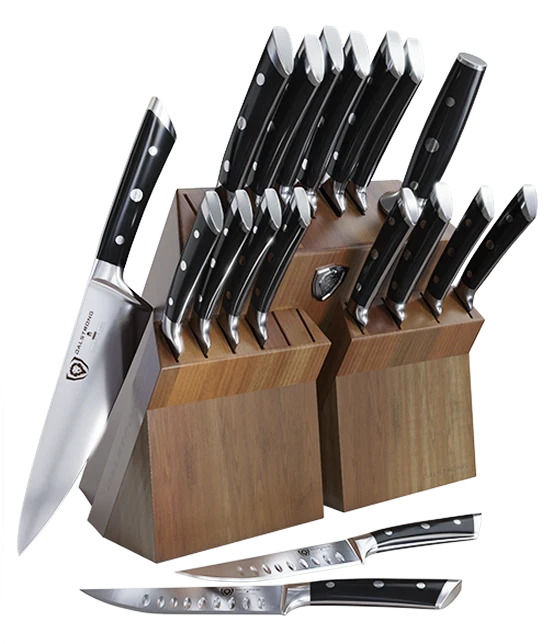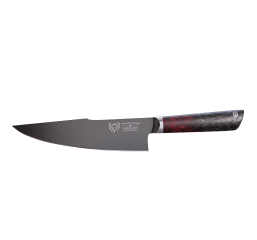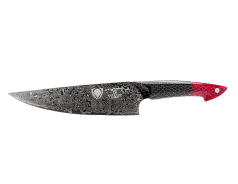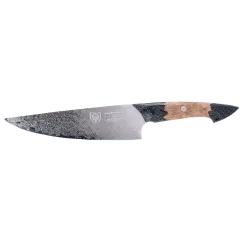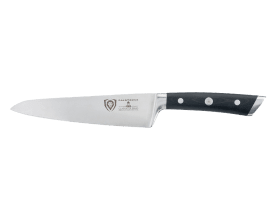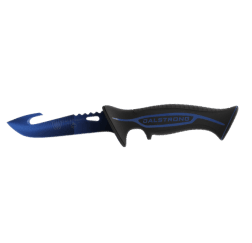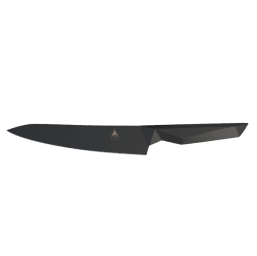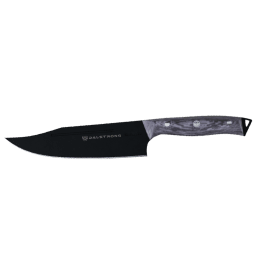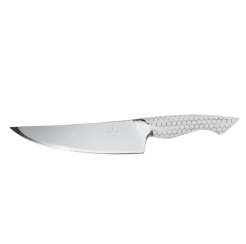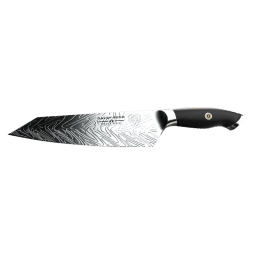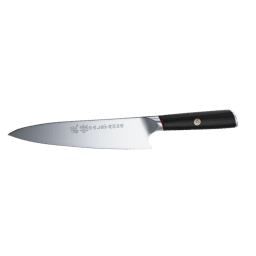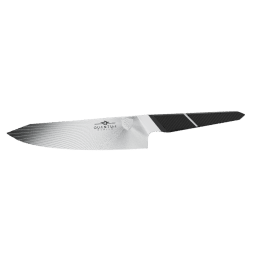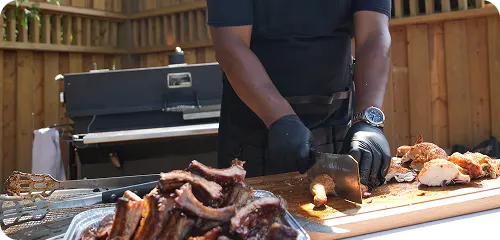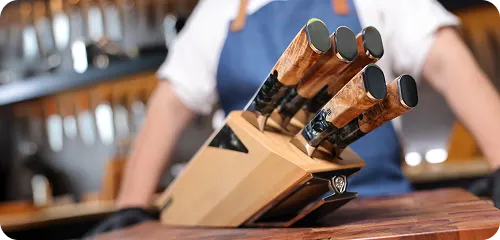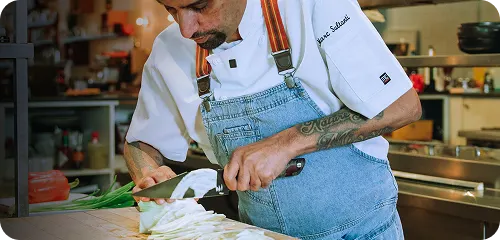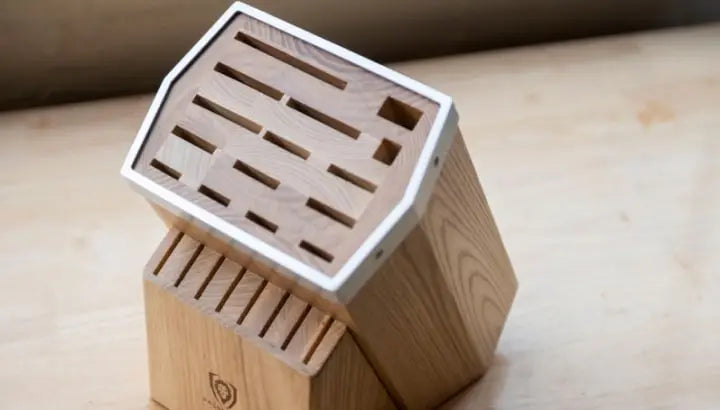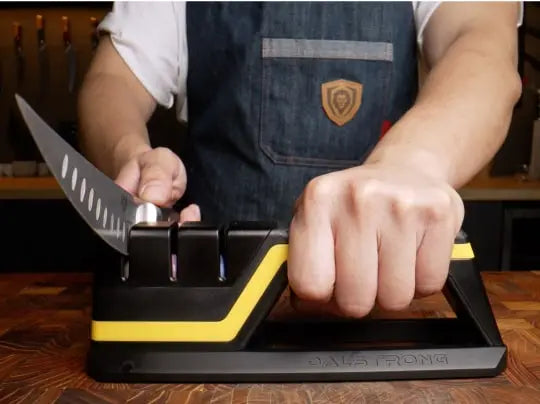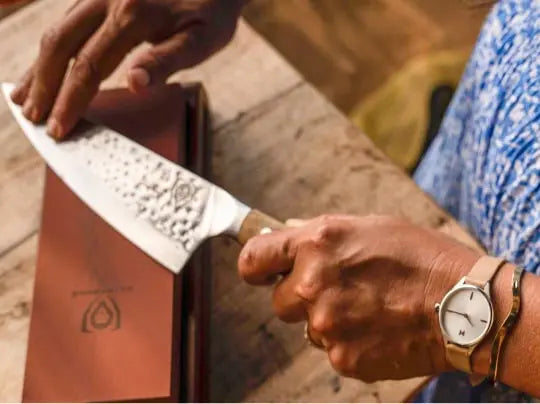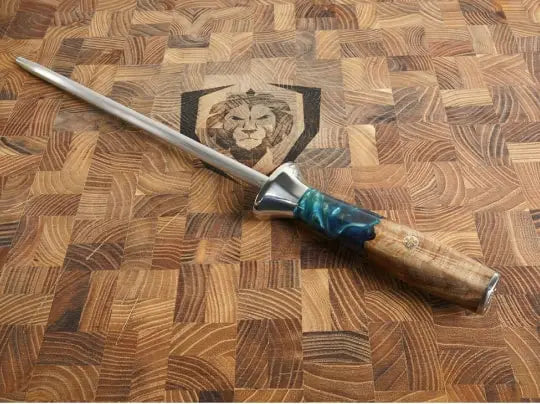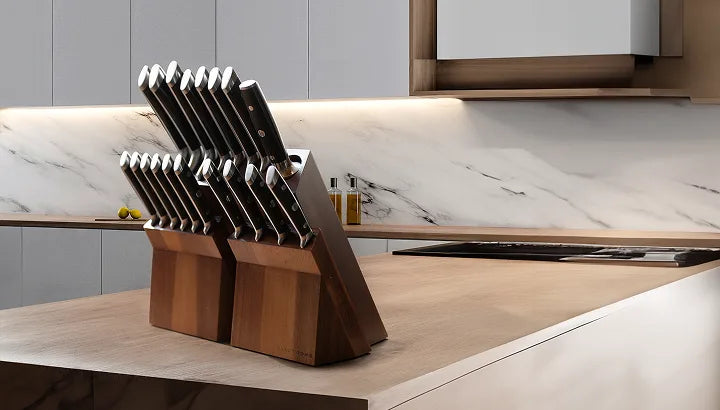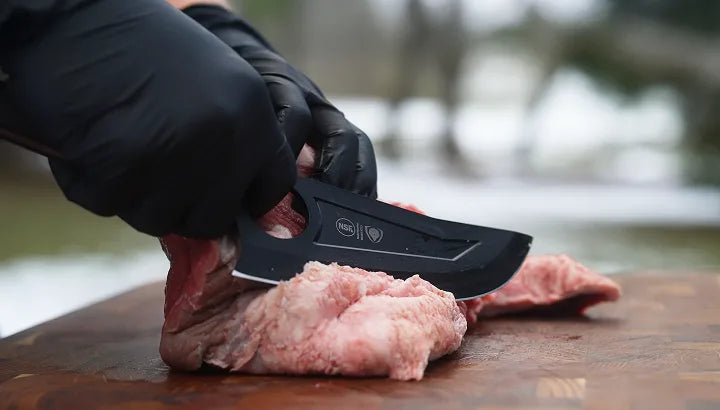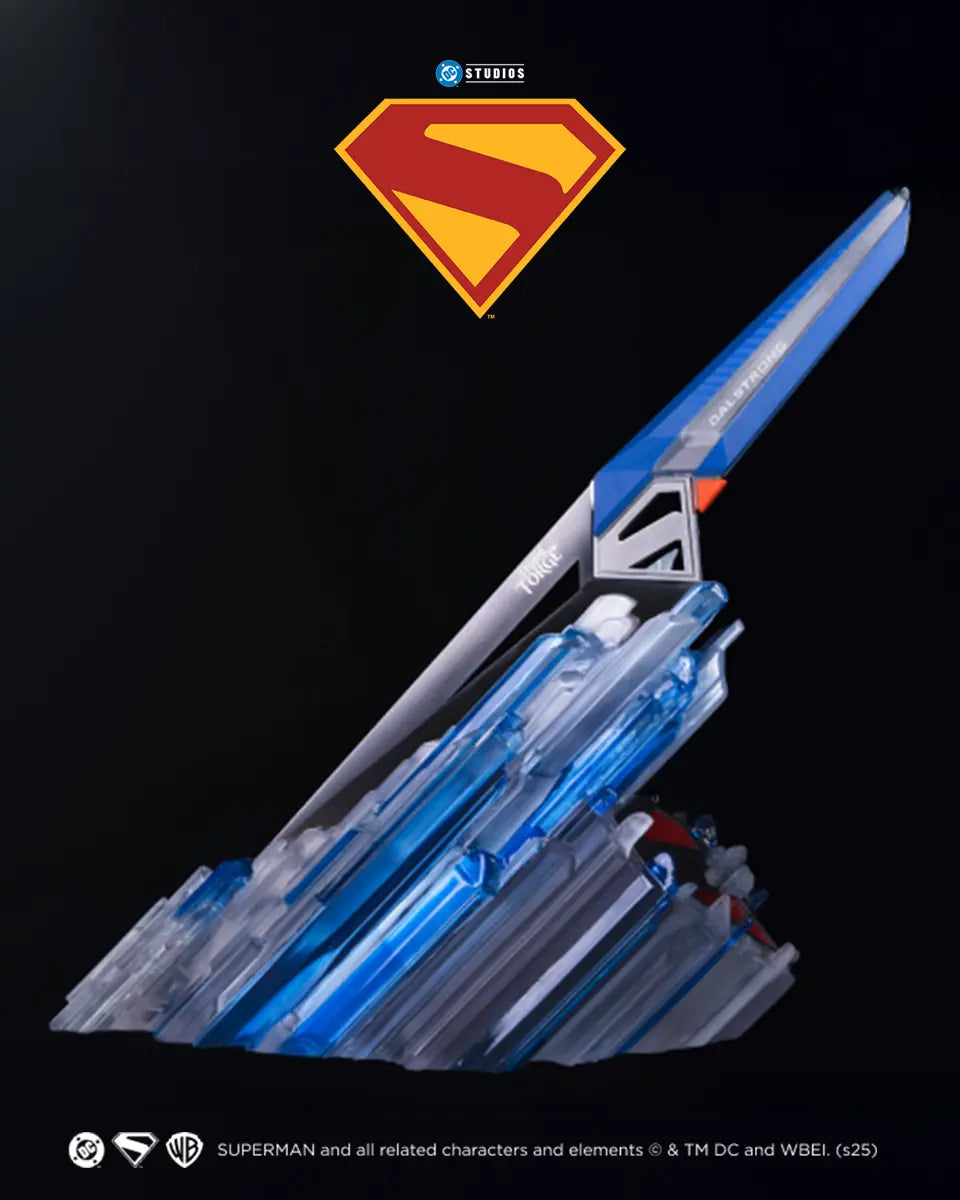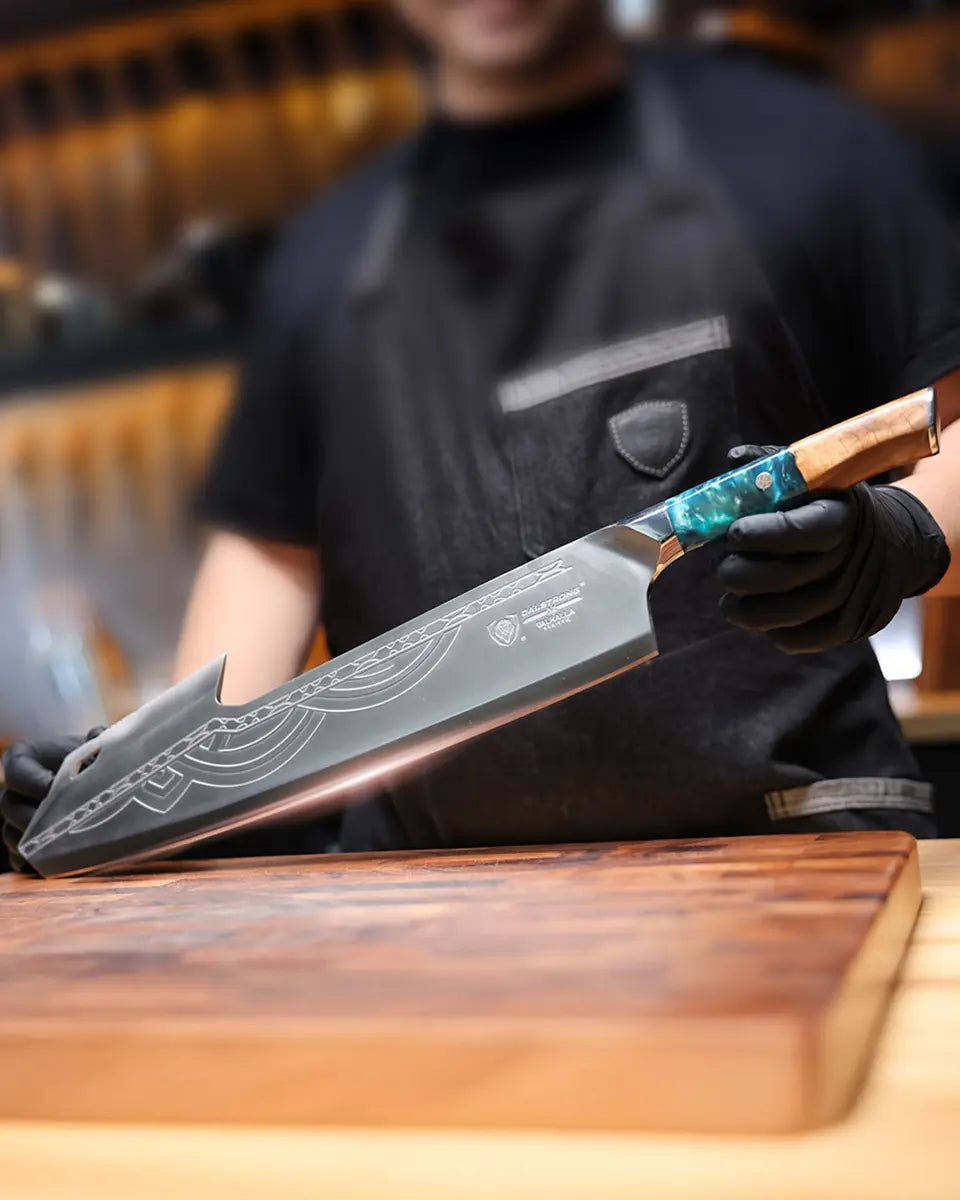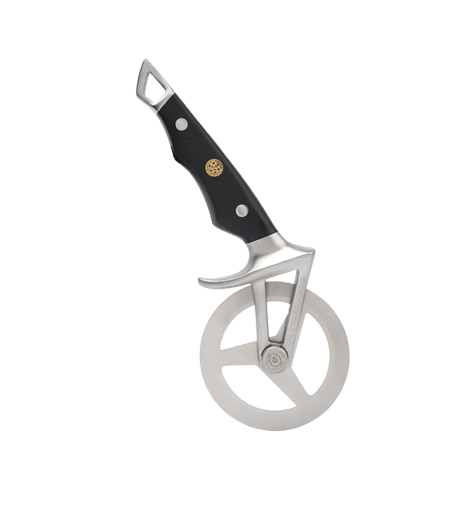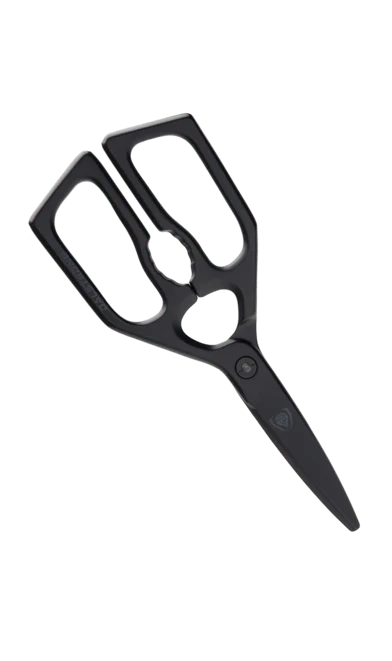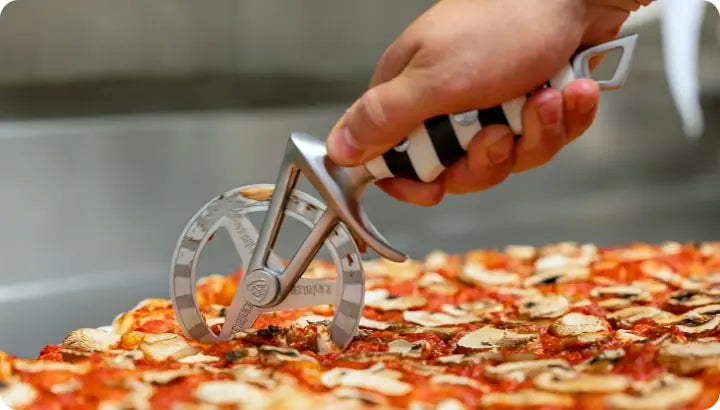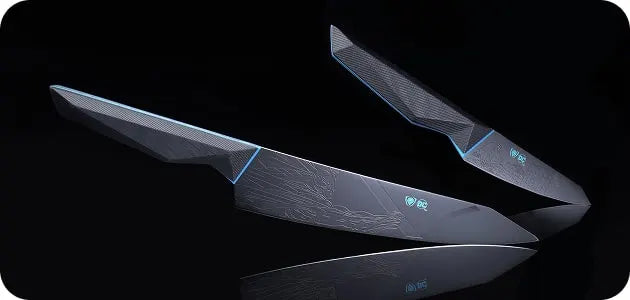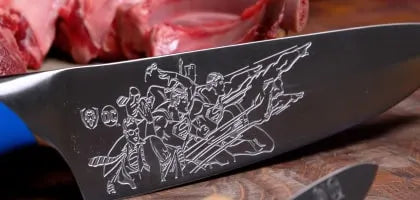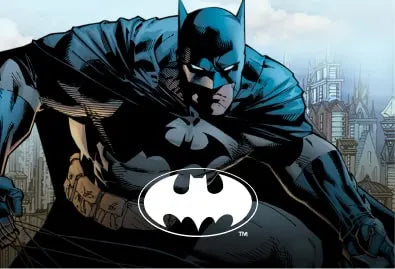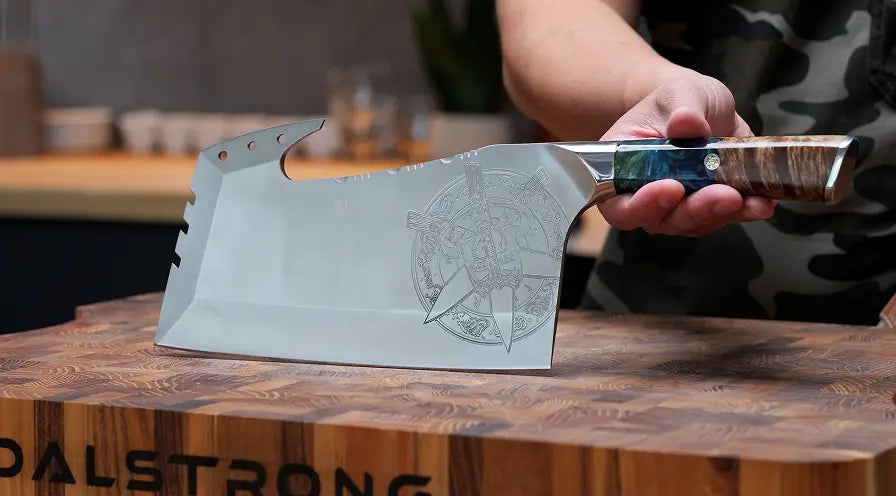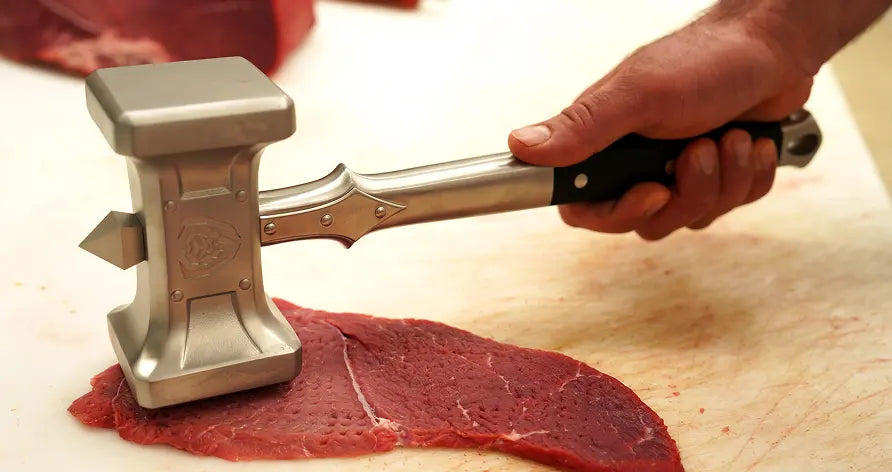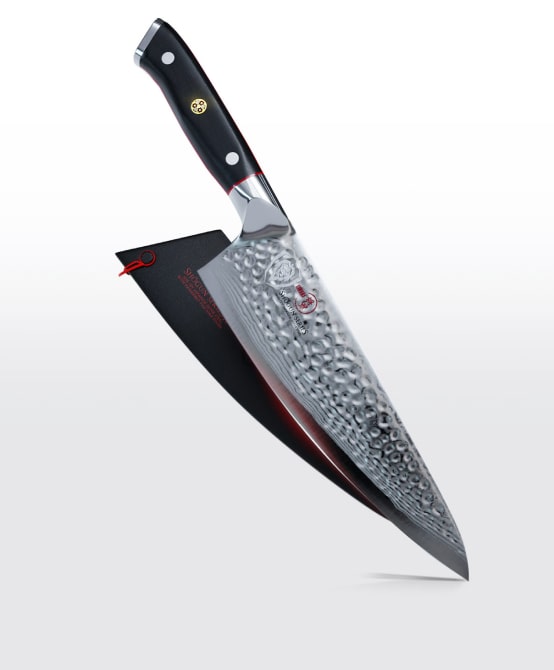 Chef's Knife 8" White G10 Handle Phantom Series Dalstrong
Chef's Knife 8" White G10 Handle Phantom Series Dalstrong
Knowing about the different types of knife steels, including the pros and cons of each type of steel, will help you in your search for your ideal kitchen tool (as well as provide a guide to how you can best look after your knives). In this article, we’ll break down the various types of steel used in kitchen knife blades.
1. Knowing Your Knife Steel Key Properties of Knife Steel
As a beginner in the culinary world, you may wonder why you should worry about something as seemingly technical and esoteric as the different types of knife steel used to create your kitchen tools. After all, as long as your knife gets the job done and your food turns out delicious, isn't that all that matters?
Not quite! It's actually quite useful to have a basic understanding of the different types of knife steel, even if you're just starting out in the kitchen. Knowing about the various types of knife steel can help you choose the right tool for the job.
Different types of steel are better suited for different tasks, so understanding the differences between them can help you select a knife that will perform well for the specific cooking tasks you have in mind. For example, a knife made of softer steel may not be the best choice for heavy chopping, but it may work well for slicing and dicing.
Also, understanding the different types of knife steel can also help you care for your knives properly. Different types of steel require different levels of maintenance and care, so having a basic understanding of what your knife is made of can help you ensure that it stays in top condition. This helps you know which sharpening tool to use either sharpening rods, electric sharpener knife, or other sharpening knife kits. This can include things like how to store your knife, how to clean it, and how often to sharpen it.
Sure, you probably don’t need to get a degree in metallurgy just to be a home cook. But having a basic understanding of the different types and their characteristics is actually super useful in helping you choose and care for your kitchen blade.
2. Key Properties of Knife Steel
 Chef's Knife 8"Shogun Series ELITE | Dalstrong
Chef's Knife 8"Shogun Series ELITE | Dalstrong
First, let’s get on the same page when it comes to what makes a knife steel good or desirable. There are several factors to consider, and many of these factors are interdependent. In order to achieve certain qualities, other qualities may have to be compromised in the steel compositions. This can make finding the "perfect" knife somewhat of a balancing act. This is why finding the right knife isn’t as simple as many people think!
So for instance, when developing stainless steel, some of the carbon needed for hardness must be replaced with elements like chromium that contribute to non-corrosiveness. This means that stainless steel may not be as hard or able to retain its edge as well as other types of steel.
Hardness
Hardness and toughness are important factors to consider when choosing a knife. Hardness refers to a knife's resistance to being scratched or indented, and it is typically measured using the Rockwell Hardness Scale (this is what it means when you see a knife advertised as having a “Rockwell score”).
Toughness, on the other hand, refers to a knife's resistance to chipping, cracking, or breaking under impact or torsional pressure. Knives with high ratings in both of these categories, such as sporting and combat knives with shorter, thicker blades, are generally more durable.
Edge retention
If you want a knife that can cut through just about anything and stay sharp for a long time, you'll want to pay attention to its edge retention. This refers to a knife's ability to keep its edge sharp and maintain its cutting power over time. It's closely tied to the hardness of the steel used to make the blade. As a general rule, harder steel will retain its edge better, but it can also be trickier to sharpen when it does eventually get dull.
That's why it's important to find a balance between hardness and other factors that can contribute to a sharp edge, like the presence of strengthening elements and the natural malleability of iron. In other words, you want a blade that's tough enough to hold up to heavy use, but also has a bit of give to it so you can easily touch up the edge when it starts to dull.
Wear resistance
Wear resistance refers to a blade's ability to hold up to heavy use and still keep its edge sharp. In general, steel with a high concentration of carbides (a.k.a. carbon content) is more wear-resistant, and high carbon steel is often very hard.
But here's the thing: if a knife is too hard, it can be more prone to chipping or breaking under pressure. That's why it's important to find a balance between hardness and toughness. You want a blade that can stand up to a lot of use, but is also durable enough to withstand the wear and tear of daily use. In other words, a knife that's tough as nails but also has a little bit of give to it.
Corrosion resistance
Corrosion resistance refers to a knife's ability to resist rusting and maintain its sleek, shiny appearance over time. While all steel has the potential to rust under certain conditions, you can find blade materials with higher levels of corrosion resistant elements like chromium (like in stainless blade) that are less prone to rusting.
Just keep in mind that in order to achieve good corrosion resistance, other qualities like strength and wear resistance may have to be compromised. In other words, you might have to sacrifice a little bit of toughness in order to get a blade that's less prone to rusting. Which brings us back to that balancing act we talked about.
3. Most Popular/Commonly Used Types of Knife Steel
 Cleaver Knife 7" Shadow Black Series NSF Certified Dalstrong
Cleaver Knife 7" Shadow Black Series NSF Certified Dalstrong
According to many knifemaking professionals, most knives are made using either tool steel, stainless steel, or carbon blade steel. Each of these types of steel has its own unique characteristics and is suitable for different types of knives.
Tool steel
Tool steel is a hard and sturdy material that can contain various alloys to improve other properties. It is often used in knives that will see heavy use, as it is able to withstand a lot of wear and tear. Tool steel is also very heat resistant, making it a good choice for cutting tools. However, it may not be as corrosion resistant as stainless steel and may not have the best finish for certain types of knives, such as kitchen knives.
PROS:
- Tool steel is known for its toughness and ability to withstand heavy use and wear. Knives made from tool steel are less likely to chip, break, or deform under pressure compared to other types of steel.
- Tool steel holds an edge well and is less prone to dulling than other types of steel. This means that knives made from tool steel will require less frequent sharpening and will stay sharp for longer periods of time.
- Some types of tool steel are highly resistant to corrosion, making them suitable for use in damp or outdoor environments.
CONS:
- Tool steel is typically more expensive than other types of steel, which can make it less accessible for some knife makers.
- Tool steel can be difficult to work with due to its high toughness and wear resistance. It may require specialized equipment and techniques to shape and finish.
- Some types of tool steel may be harder to find or obtain than other types of steel, which can make it more challenging to source materials for knife making.
- Tool steel often requires a complex heat treatment process to achieve optimal properties, which can be time-consuming and may require specialized equipment. Of course, it’ll be knife makers who have to heat treat these tools, not the final consumer.
- Not a great steel for kitchen knives.
Stainless steel
When it comes to kitchen knives, stainless steel is arguably the most popular choice because it has several desirable qualities. One of the biggest benefits of using stainless steel for a kitchen knife is that it is corrosion resistant, which is extremely important in a moist environment like a kitchen. This means that the knife is less likely to rust over time, which can affect its performance and appearance. Stainless steel knives are easy to look after.
Stainless steel is also known for its visual appeal, which can make the knife look attractive and professional. Although it is not as hard as tool steel or carbon steel, it is still a durable option that can withstand regular use in the kitchen. And not only that, they look great.
Let’s take, for instance, the Dalstrong Crusader Series. This is an absolutely gorgeous series of all-stainless steel knives that are renowned for their excellent steels performance and their elegant, less-is-more design. This is a knife series that takes full advantage of the more desirable properties of stainless steel. And thanks to knife sets like this gorgeous 8-piece block set, you can have these incredible stainless steel knives in full display in your kitchen.
Overall, stainless steel is a good choice for kitchen knives because it is resistant to corrosion and has a nice finish, making it a practical and visually appealing option. It is especially useful for knives that will be used in moist or humid environments, as it is less prone to rusting in these conditions.
PROS:
- Stainless steel is highly resistant to corrosion, making it suitable for use in damp environments such as the kitchen.
- Stainless steel is low maintenance; very easy to care for and does not require special cleaning or maintenance to prevent rust or other types of corrosion.
- Stainless steel is a non-porous material, which means that it is less likely to harbor bacteria compared to other types of knife materials. This can make it a more hygienic choice for kitchen knives.
- Stainless steel has a bright, shiny appearance that can make it an aesthetically pleasing, attractive choice for kitchen knives.
CONS:
- Stainless steel does not hold an edge as well as some other types of steel, which means that it may require more frequent sharpening.
- Stainless steel is generally softer than other types of steel, which can make it more prone to deformations or chips under heavy use.
- Some types of stainless steel can be more expensive than other types of steel, which may make it less accessible for some consumers.
Carbon steel
Carbon steel is a type of steel that is commonly used to make knives because of its ability to create a very sharp blade that is easy to sharpen. It is also very hard and strong, which makes it a good choice for blades that will see rough use and need to be able to withstand a lot of wear and tear.
However, a drawback of carbon steel is that it’s not very corrosion resistant, so it’s more prone to rusting than stainless steel. This can affect its appearance and performance. Despite these drawbacks, carbon steel is still a popular choice for certain types of knives, particularly those that will see heavy use and require a sharp, strong blade.
Several Dalstrong blades use Carbon steel, such as the knives in their acclaimed Quantum 1 series. A great example of this is this 6” boning knife, which needs to be tough because it’s going to be used for tough jobs. Since it’s made of high carbon steel, it has more than enough strength to get the job done.
Another Dalstrong knife series that uses carbon steel is the Shadow Black Series, the absolutely gorgeous pitch-black knife set that looks like something out of a sci-fi movie. Seriously, some of the coolest knives you will ever buy.
Take this incredible meat cleaver, for example. Nicknamed “the Obliterator,” this 9” cleaver is made of precision forged, ultra sharp, wear-resistant, single-piece high-carbon 7CR17MOV-X vacuum treated steel, making it perfectly suited for some of the toughest kitchen tasks you’ll ever encounter.
PROS:
- Carbon steel holds fine edges well and is less prone to dulling than other types of steel. This means that knives made from carbon steel will require less frequent sharpening and will stay sharp for longer periods of time.
- When it does come time to sharpen it, carbon steel is generally easier to sharpen than stainless steel, which can make it more convenient to maintain a sharp edge. Even those standard manual knife sharpeners will get a great edge out of these.
- Carbon steel is known for its toughness and ability to withstand heavy use and wear. Knives made from carbon steel are less likely to chip, break, or deform under pressure compared to other types of steel.
- Carbon steel is known for its ability to quickly and easily take a sharp edge, which can make it more responsive and precise in use.
CONS:
- Carbon steel is prone to rust and other forms of corrosion if not properly cared for. This means that it requires more maintenance and care to prevent rust or discoloration.
- Carbon steel can be prone to staining if used to cut acidic foods or if not properly cleaned and dried after use.
- Carbon steel can be difficult to work with due to its high toughness and wear resistance. It may require specialized equipment and techniques to shape and finish. However, this will only really be a problem for the knifemakers, not for the final consumer, so you probably shouldn’t worry about it.
Damascus steel
Damascus steel has a long history and was originally used to make swords and other bladed weapons, dating back to the ancient city of Damascus. Their local blacksmiths were considered the very best in the world thanks to their unique techniques of knife fabrication. Not only did it result in a very useful steel, but it was also renowned for its beauty.
Read about how to recognize real vs. fake Damascus steel, here.
Indeed, one of the things that makes Damascus steel so special is its distinctive pattern, which is created by layering different types of steel and forging them together. The resulting pattern is often described as being like a flowing river or a wood grain, and it is highly prized for its beauty.
Today, Damascus steel is still used to make knives, although it is not as common as it once was. The process of making Damascus steel involves forging together layers of steel with different properties, such as high carbon steel and low carbon steel. This creates blade steel that is strong and durable, with a unique pattern on the surface.
One of the main benefits of Damascus steel is that it is able to retain a very sharp edge, making it a good choice for knives that will see heavy use. It is also resistant to chipping and breaking, which makes it a durable choice for certain types of knives. However, Damascus steel can be more expensive to produce than other types of steel, and it may require more maintenance to keep it in good condition.
In many cases, what is known as Damascus steel is actually a stainless steel cutting core with various layers of Damascus cladding, maximizing the very best of both worlds – the positive attributes of stainless steel and the beautiful, iconic look of traditional Damascus steel. If you want to learn more about this, check out this article about why everyone loves Damascus steel.
One of Dalstrong’s most widely renowned kitchen knife series is the Shogun Series, a group of knives that look incredible and have unparalleled kitchen performance. One of the most popular knives in this series is the 8” chef’s knife, which – thanks to its versatility and power – might be the only knife many home cooks ever need.
This incredible knife features scalpel-like sharpness at a stunning 8-12 degree angle per side. And thanks to its awesome toughness edge retention (62+ Rockwell), it’ll be long before you have to sharpen it. The blade itself is made of AUS-10V Japanese super steel core, with 67 layers of Damascus cladding.
PROS:
- Put simply, Damascus steel blades look awesome. This is due to their unique and visually striking pattern, which can make it a highly attractive choice for kitchen knives.
- Damascus steel holds an edge well and is less prone to dulling than other types of steel. Knives made from Damascus steel will require less frequent sharpening and will stay sharp for longer periods of time.
- Damascus steel is known for its toughness and ability to withstand heavy use and wear. Knives made from Damascus steel are less likely to chip, break, or deform under pressure compared to other types of steel.
- Damascus steel has a long history and tradition in knife making, which can make it a highly prized and sought-after material for collectors and enthusiasts.
- When used along with stainless steel, it is an amazing combination.
CONS:
- Damascus steel is typically more expensive than other types of steel.
- Damascus steel is also generally harder to come across.
Ceramic
This isn’t really a type of steel, but it should be mentioned in this list as knives are often made of this material. The name of the material is zirconium oxide, which is a very hard and brittle substance. Ceramic knives are known for their extremely sharp edges and their lightweight design, which makes them easy to handle.
One of the main benefits of ceramic knives is that they are able to retain their sharpness for a longer period of time than other types of knives. They are also resistant to corrosion, which means that they are less prone to rusting. However, ceramic knives can be more fragile than other types of knives and may be more prone to breaking or chipping if they are not handled carefully.
So, which type of steel is best for you? Ultimately, the choice between these various types of steel will depend on the specific needs and preferences of the user.
4. Knife Steel Comparison Chart
 Butcher & Breaking Knife 10" Quantum 1 Series Dalstrong
Butcher & Breaking Knife 10" Quantum 1 Series Dalstrong
|
Steel type |
Hardness (Rockwell rating) |
Wear resistance |
Corrosion resistance |
Toughness |
Edge retention |
|
High carbon |
55-65 |
High |
Low |
High |
High |
|
Stainless steel |
55-65 |
High |
High |
Low |
Moderate |
|
Tool steel |
60-65 |
High |
Low |
High |
High |
|
Ceramic |
80-90 |
High |
High |
Low |
High |
|
Damascus |
55-65 |
High |
Low |
High |
High |
|
Carbon stainless steel |
55-65 |
High |
High |
Low |
Moderate |
It is important to note that this is a general comparison, and the specific properties of a particular steel may vary depending on the specific alloy and heat treatment used.
5. Frequently Asked Questions
What steel is used for knives?
Most knives are made with tool steel, stainless steel, or carbon steel. When it comes to kitchen knives, stainless steel is a popular choice among both manufacturers and consumers. This is due in large part to its combination of affordability and the wide range of stainless steel grades available. Stainless steel is also easy to care for and less prone to rusting than other types of steel, making it a convenient choice for everyday use.
What is the strongest steel used for knives?
High carbon steel is known for its awesome hardness and ability to hold a sharp edge. However, it is also more prone to corrosion and may require more maintenance to keep it in good condition. Stainless steel, on the other hand, is highly resistant to corrosion and easier to maintain, but it may not be as hard or capable of retaining a sharp edge as long as high carbon steel.
What knife steel is the sharpest?
Carbon knife blade steels are known for their sharpness and hardness, making them a popular choice among professional chefs and home cooks alike. However, while a high-quality carbon steel knife can be exceptionally sharp, it can also be a bit more fragile and prone to chipping if not used correctly.



